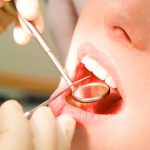When writing about ‘the future’, the tendency is to look at what might happen next year but one of the benefits of being involved with dental students is that even somebody of my age has to recognise that the really important changes, although predictable, may take decades to impact.
The students I meet on the Birmingham University Alumni Leadership Mentoring Programme may well still be practising in 2060 –so what will have changed by then?
Dentistry has changed massively since I graduated in 1973. At that time, dentistry was focused on meeting the overwhelming need for treatment, largely driven by the high levels of caries and the changing societal attitude to poor oral health.
Services have diversified and we are now dealing with a combination of different needs and growing ‘wants’, with people with good oral health but ‘imperfect’ appearance wanting to do something about it.
This aspect of ‘want’-driven care is certain to continue but may change; already we have seen a shift from highly invasive cosmetic interventions to a greater focus on minimally invasive work. My view is that this is a really good change, as the massive tooth loss that occurred when cosmetic work was based on crowns and bridges almost always caused problems down the line, even if the patient was not told of the potential issues!
The attitude to appearance will also depend on how the social media world – with its obsession with perceived perfection – evolves and whether there is a backlash against ‘appearance bullying’.
There is a lot of robust data that tells us that caries will be massively less prevalent in just a couple of decades – the most recent Chid Dental Health Survey (CDHS), for instance, revealed a significant reduction in overall caries rates. Given the better knowledge around evidence-based prevention and the pressure on food manufacturers to reduce the sugar content in foods, particularly those aimed at children, this is bound to accelerate.
At the other end of the spectrum, the rapidly increasing older dentate population will present a growing challenge, as it will within other areas of healthcare. There is no doubt that our current political leaders are repeatedly being told by leading clinicians that this section of society presents the biggest issue. At the moment, their response seems to mirror that of an ostrich to sand, yet how governments of the day face up to the obvious financial implications will determine, largely, the quality of care the older dentate population receives.
Working with young undergraduates has shown me that they have a great diversity of interests, are keen to understand public health issues, keen to use the latest technologies and, above all, keen to make a difference. I think dental professional lives will become more diverse and working in communities will become more of a norm for the whole dental team. I suspect that balance of education provision between dentist and DCP will change and the regulators and representatives of the professions will have to change to reflect that.
There are fleeting glimpses that community water fluoridation might finally be getting more widespread support and the recent statement by The Royal Society of Chemistry that it is safe and effective is a huge help, given that they are neither pro nor anti water fluoridation but definitely pro the accurate interpretation of scientific research.
In the shorter term, contract reform seems to be heading into the longer grass. Perhaps this is not such a bad thing as it may encourage Local Dental Professional Networks to look at what they can do to improve services and outcomes using the flexibilities that are there within the current legislation, rather than just waiting for something to happen centrally.
Public Health England has already had success in reducing sugar consumption and encouraging dental engagement in the Change for Life programme, a a major achievement that should have a long term impact.
Access to services plays a vital role in improving oral health and, when you combine NHS and private services, there has been a significant growth over the last ten years (around 35 million people now seeing a dentist regularly compared with around 31 million in 2006). There is, though, a worrying correlation between those who do not seek care and those with the highest levels of disease. The CDHS showed that caries prevalence is highest in deprived and ethnic minority populations and we need to find ways to better engage and motivate those groups.
The recent Care Quality Commission report showed that our dental services are effective and of a high quality but we need to better message their availability and to press commissioners where availability is insufficient. The 2006 legislation imposed a statutory duty on the NHS to provide or commission services to meet the local need and in some areas where there is limited availability and demonstrable unmet need they need reminding of this.
We, as a profession, always seek perfection – not a bad aspiration but is it realistic? As with other areas of health, individual behaviours determine our own oral health.
We all know that obesity and smoking are principle determinants of poor general health but even intelligent people are sometimes obese and smoke, we cannot remove this cognitive dissonance from our society, just as we cannot mandate dental attendance, but we have to explain the benefits in clearly understandable and consistent messages.
Working with young dentists and students has shown me that they do not fear change, view it as inevitable and see it as an opportunity rather than a threat and that the best thing is to be influential as the world, and the dental world, continues to change.












